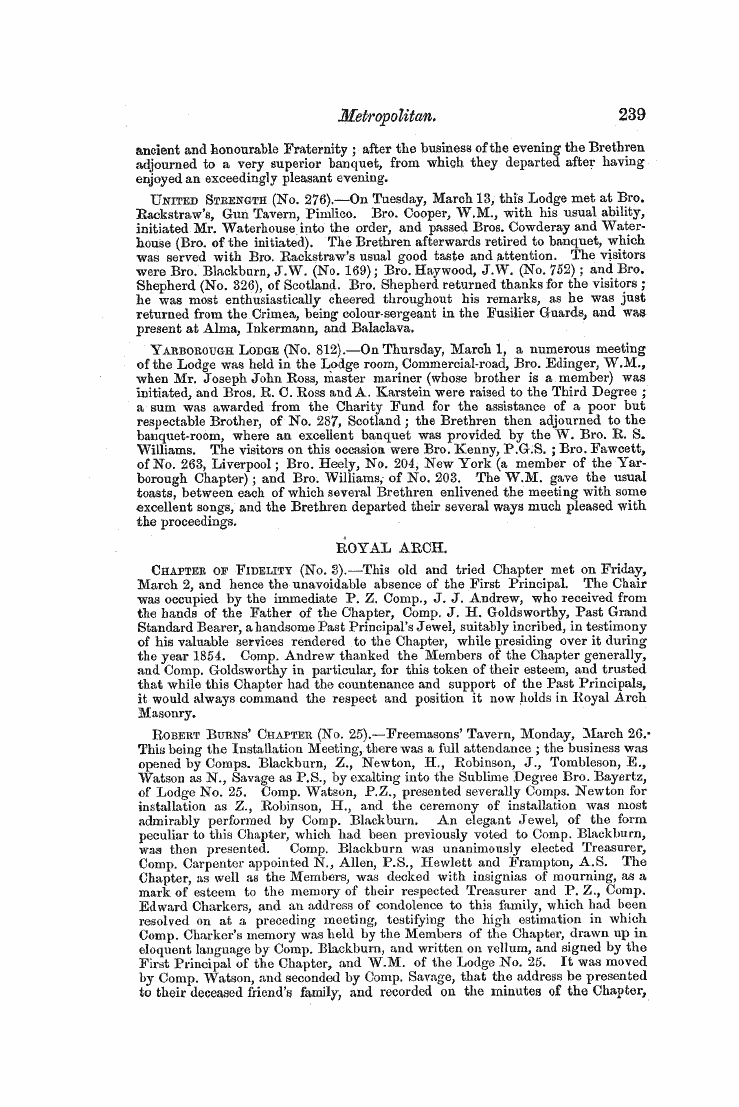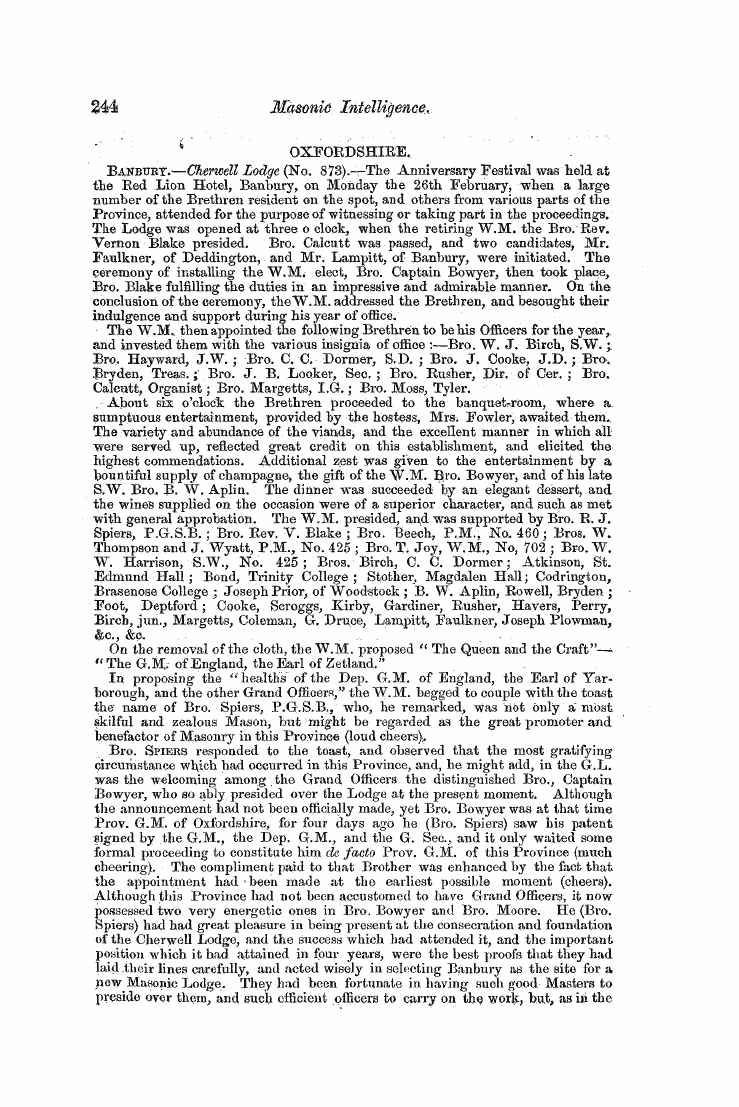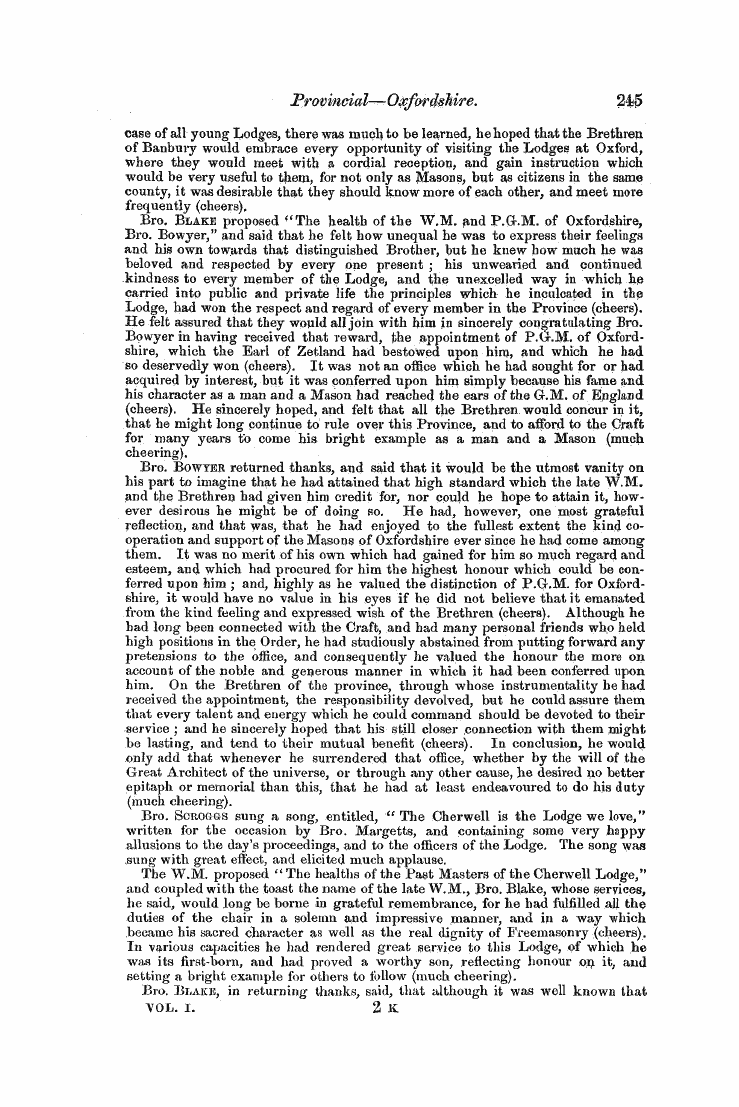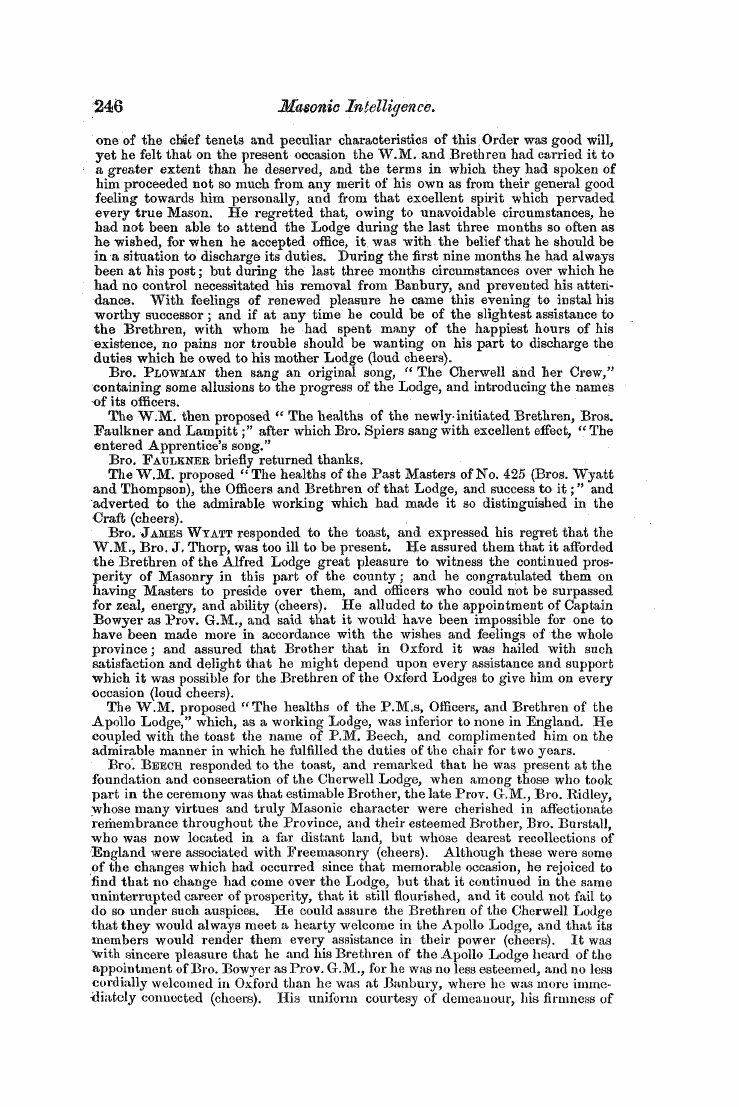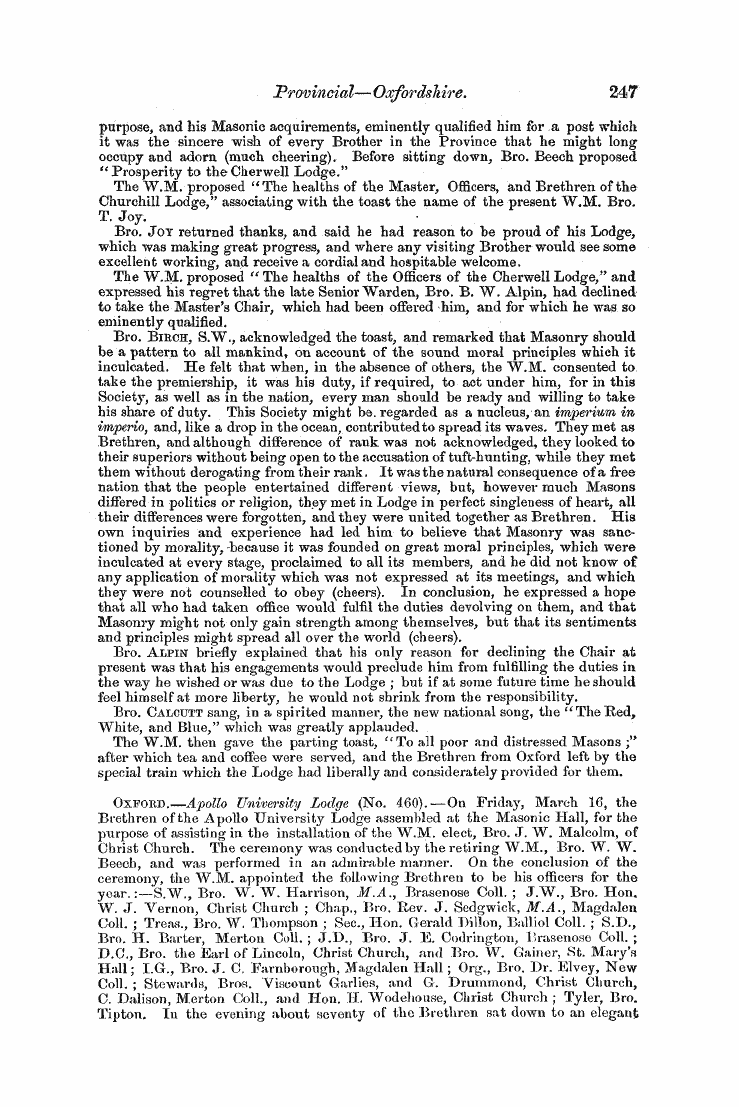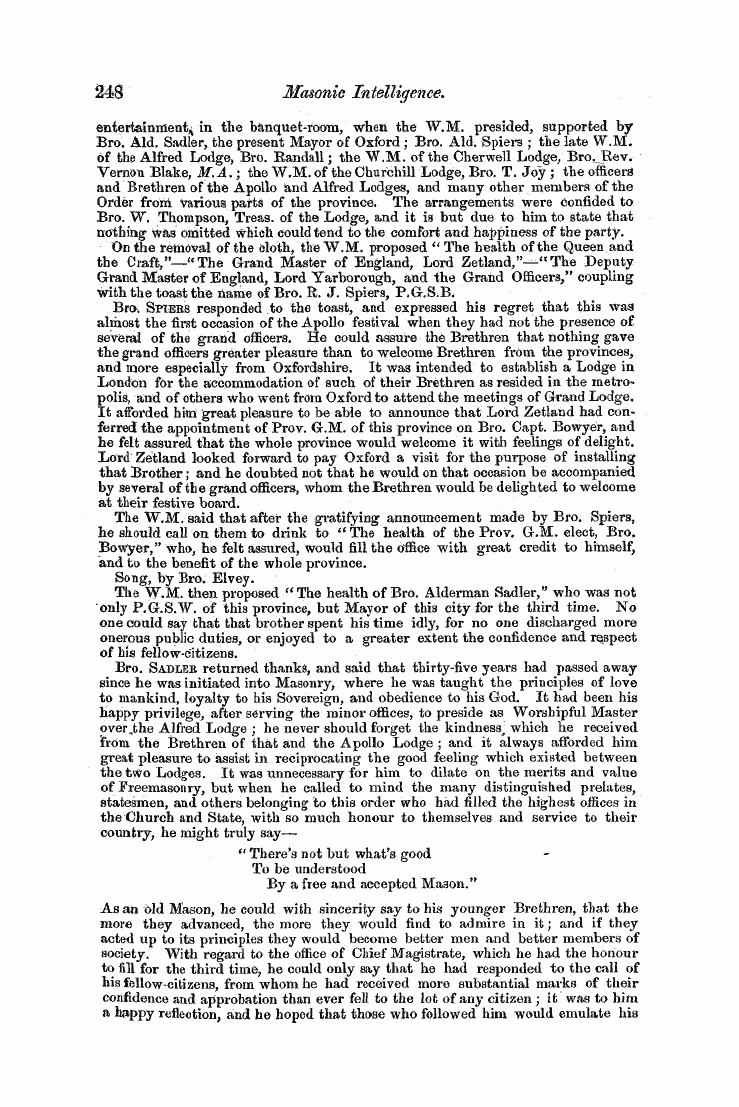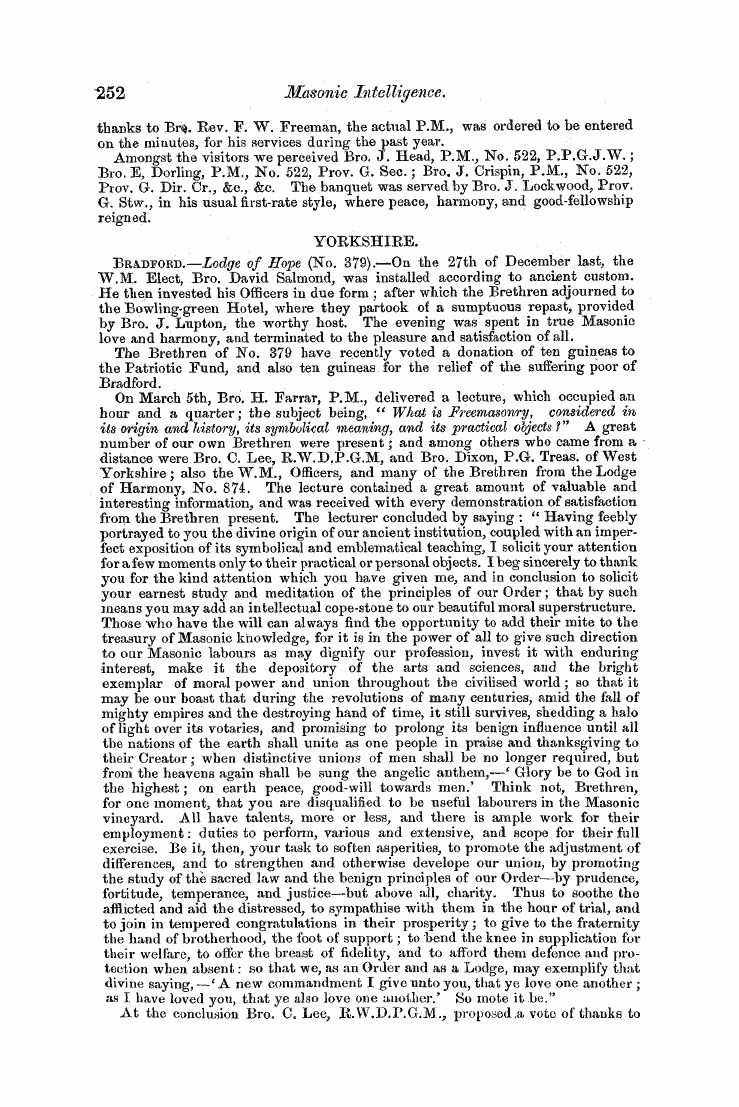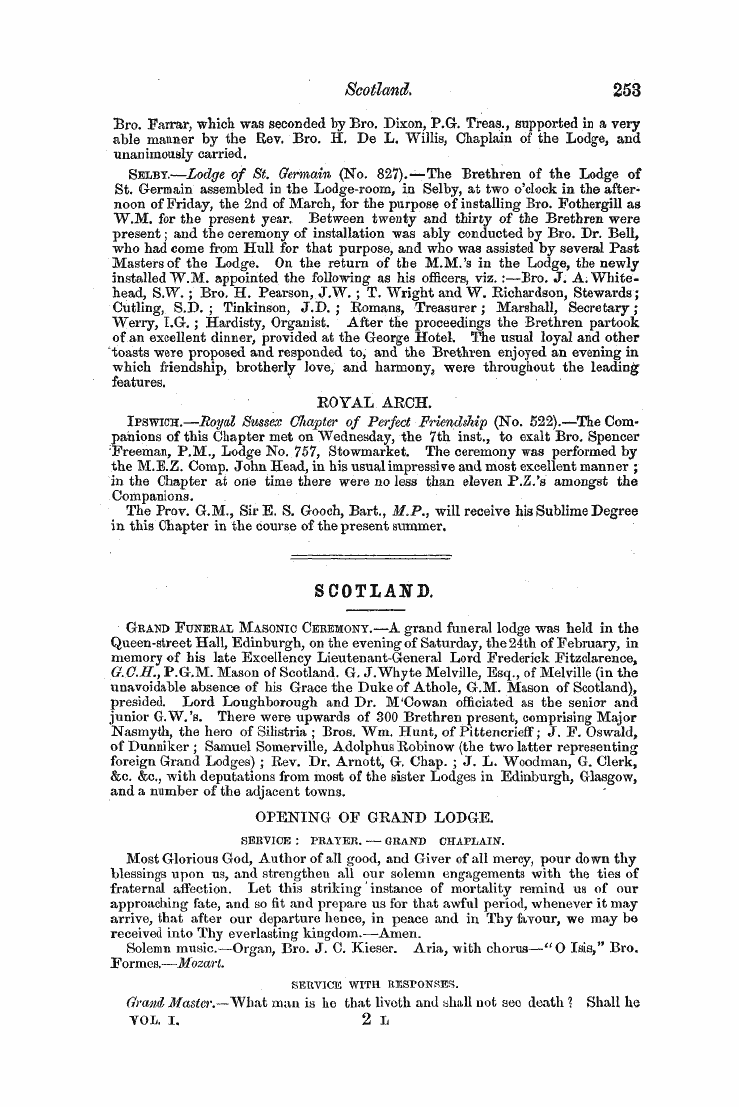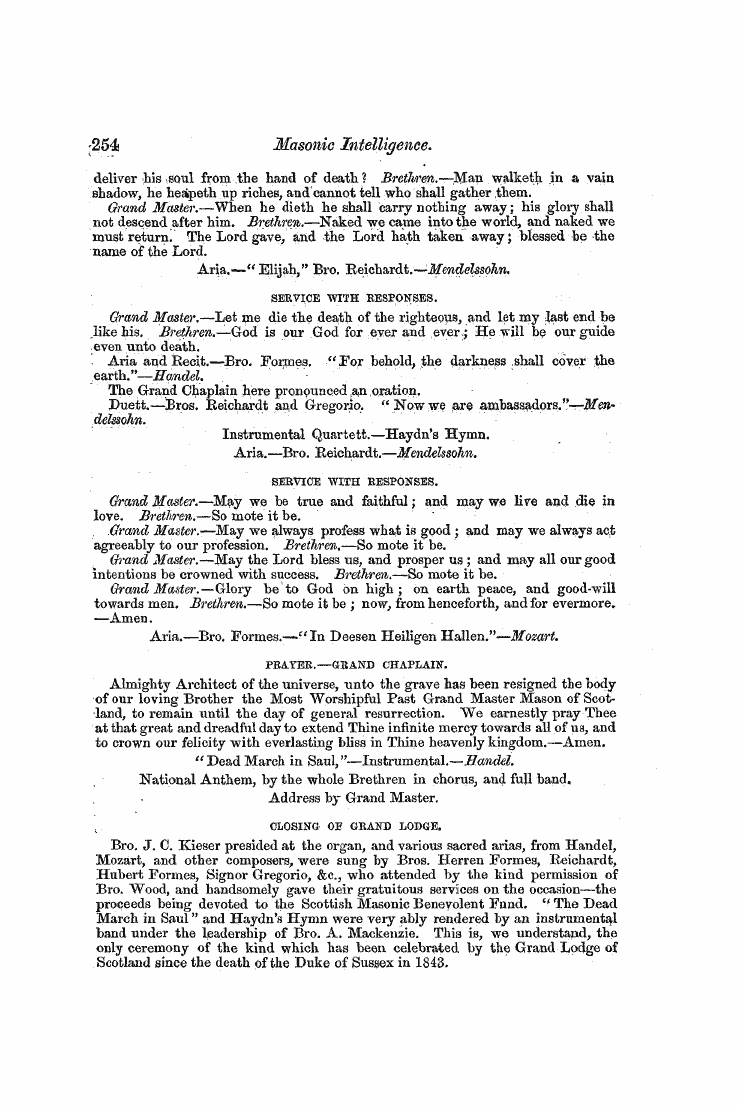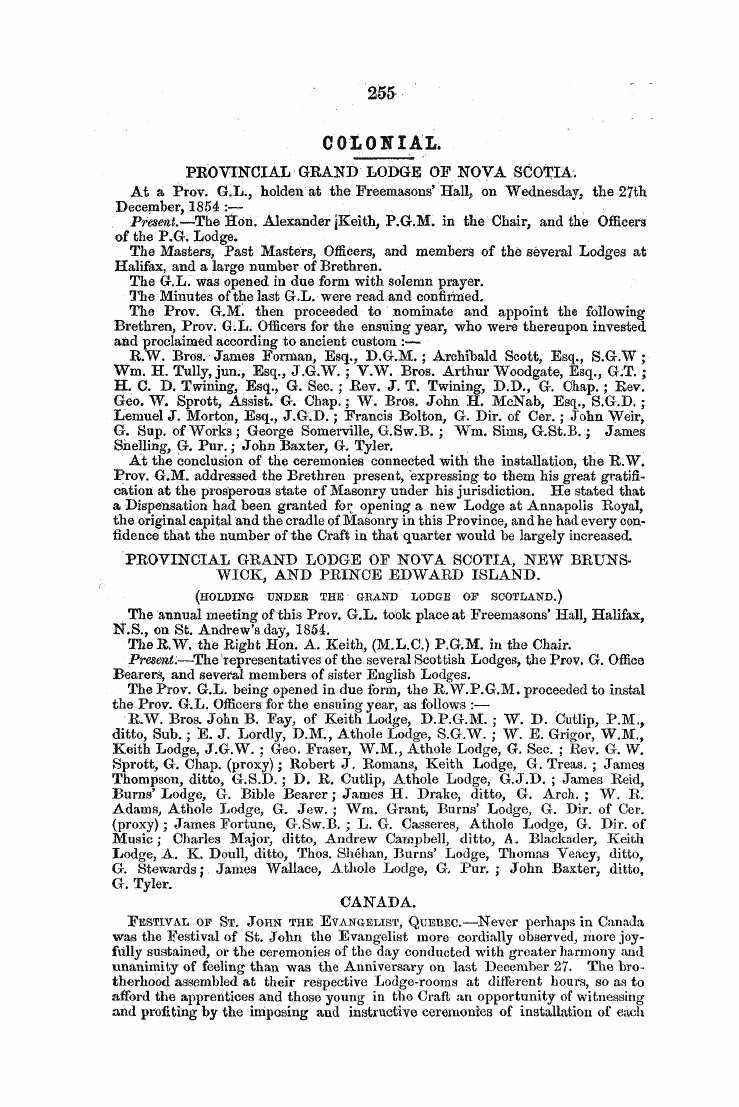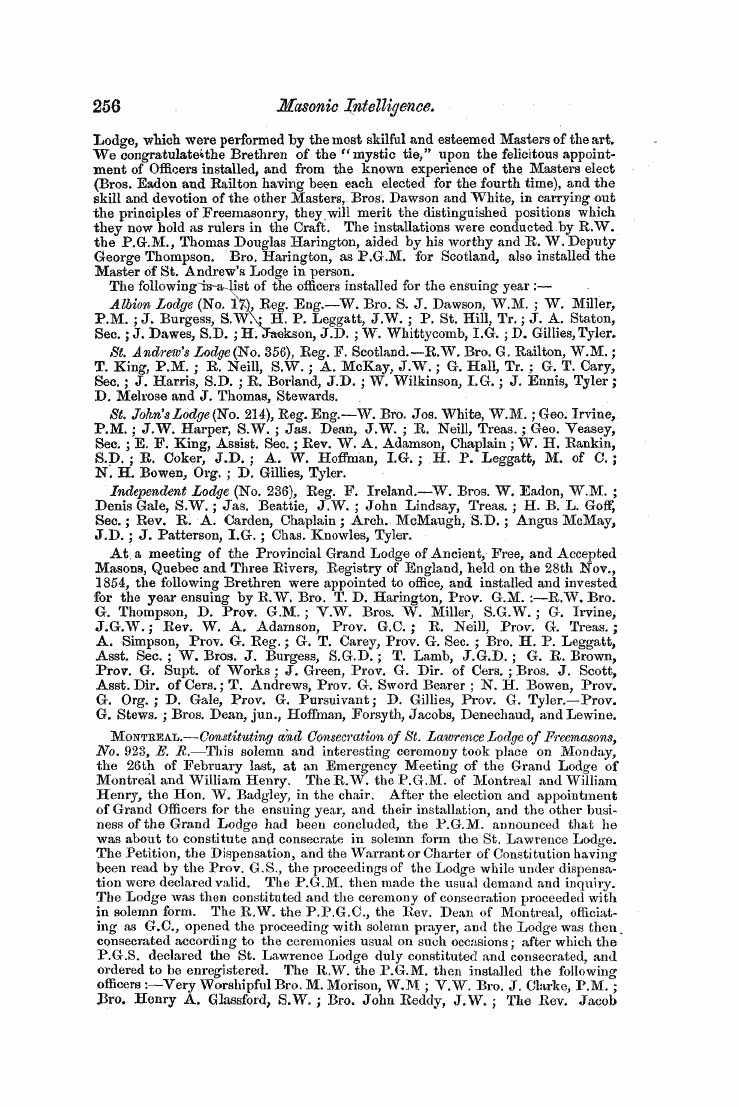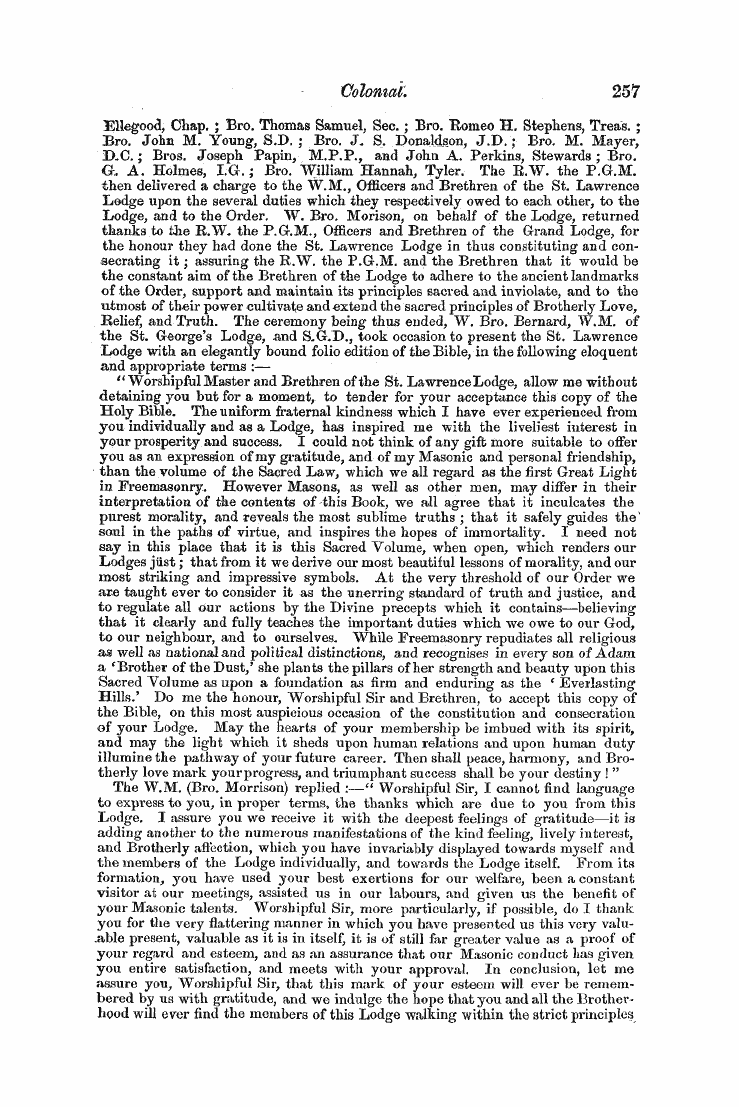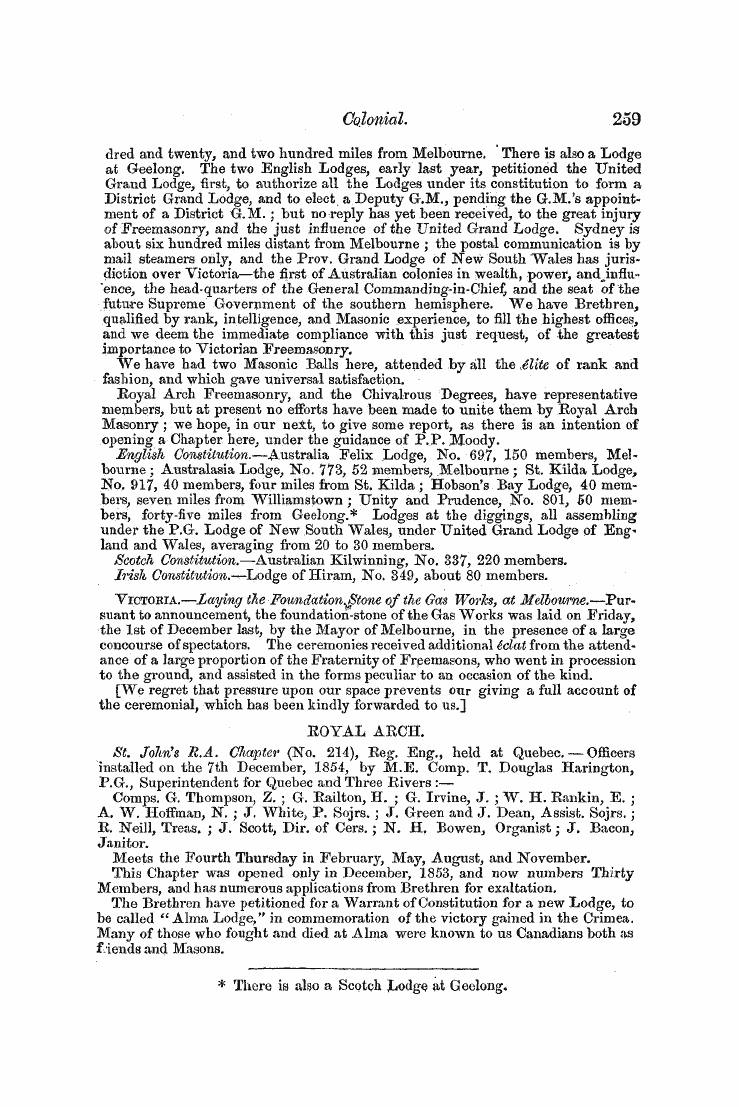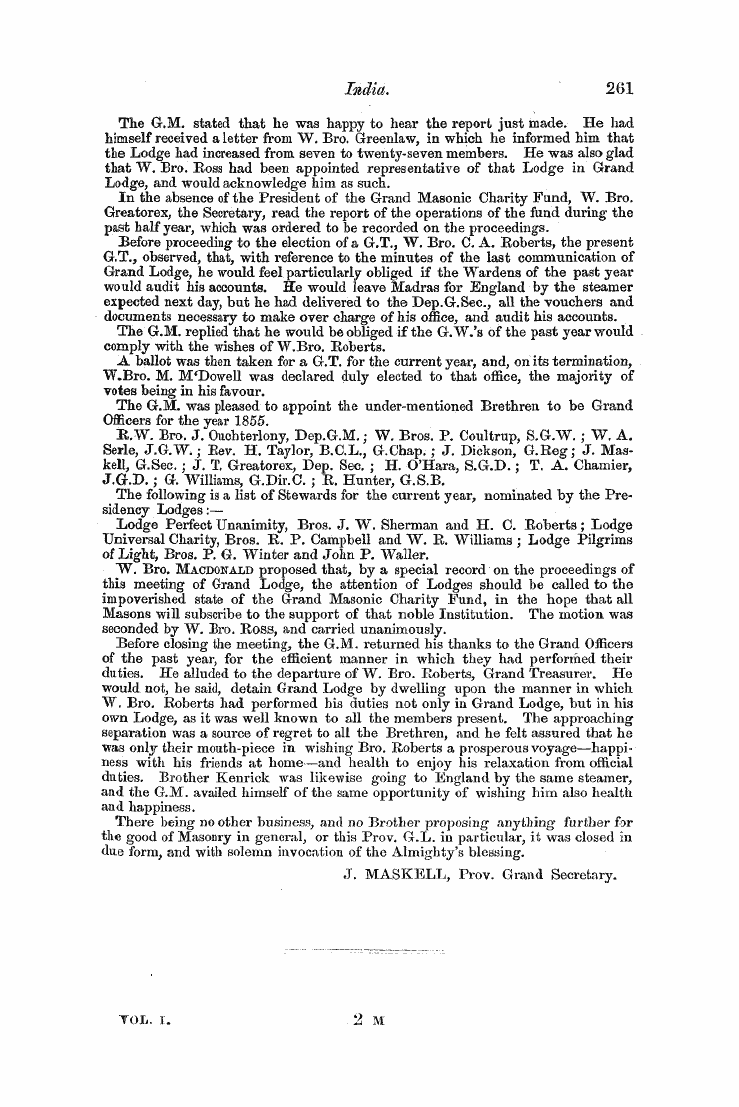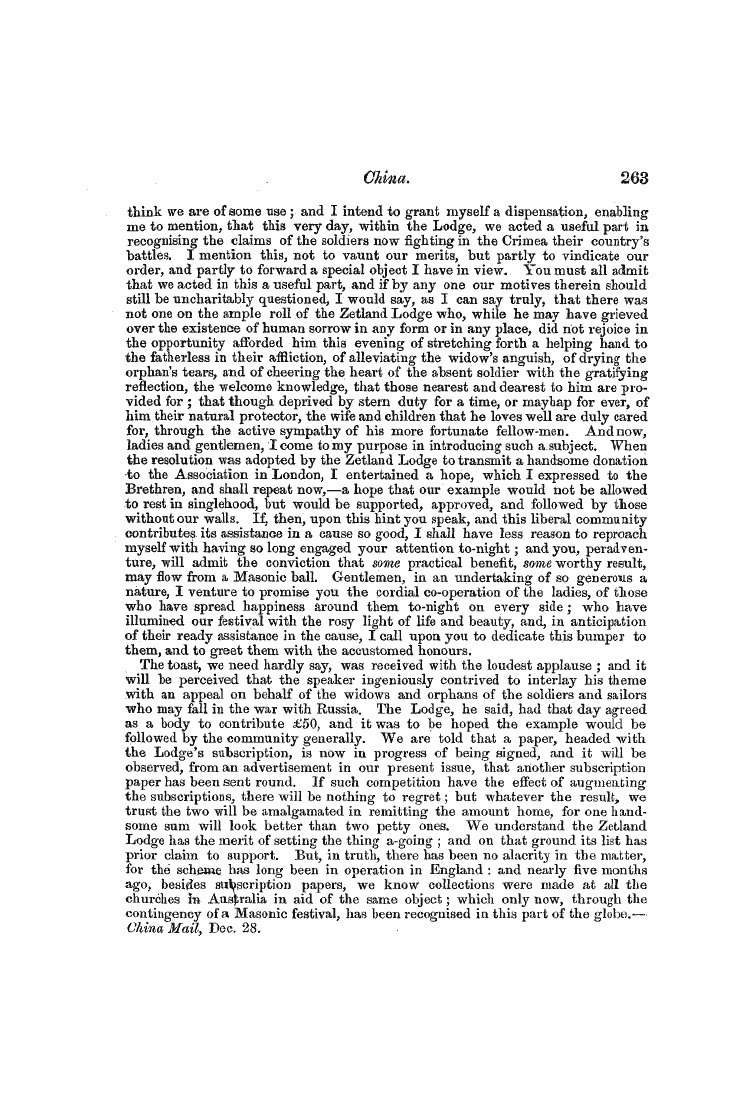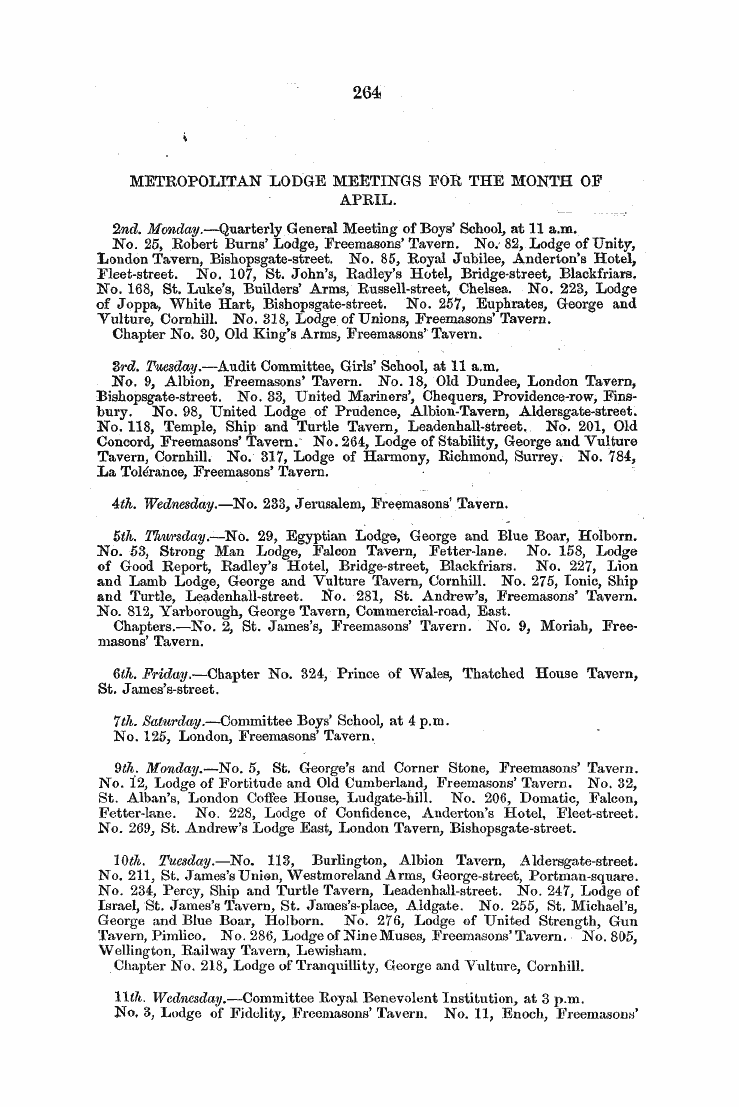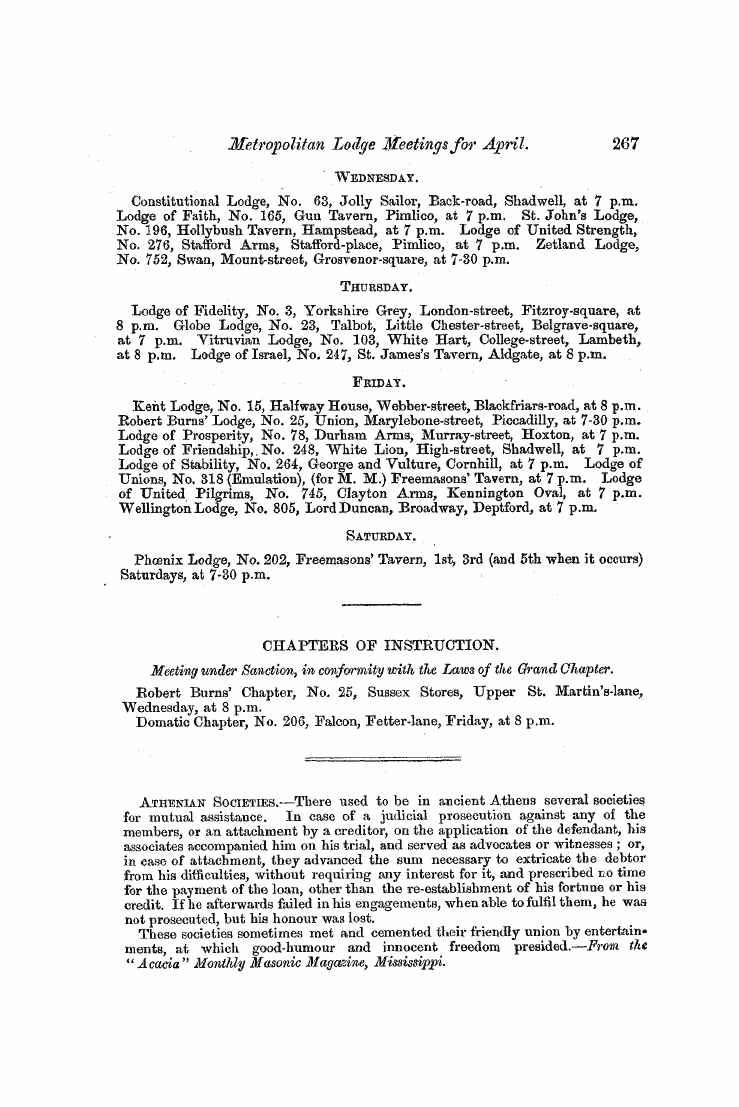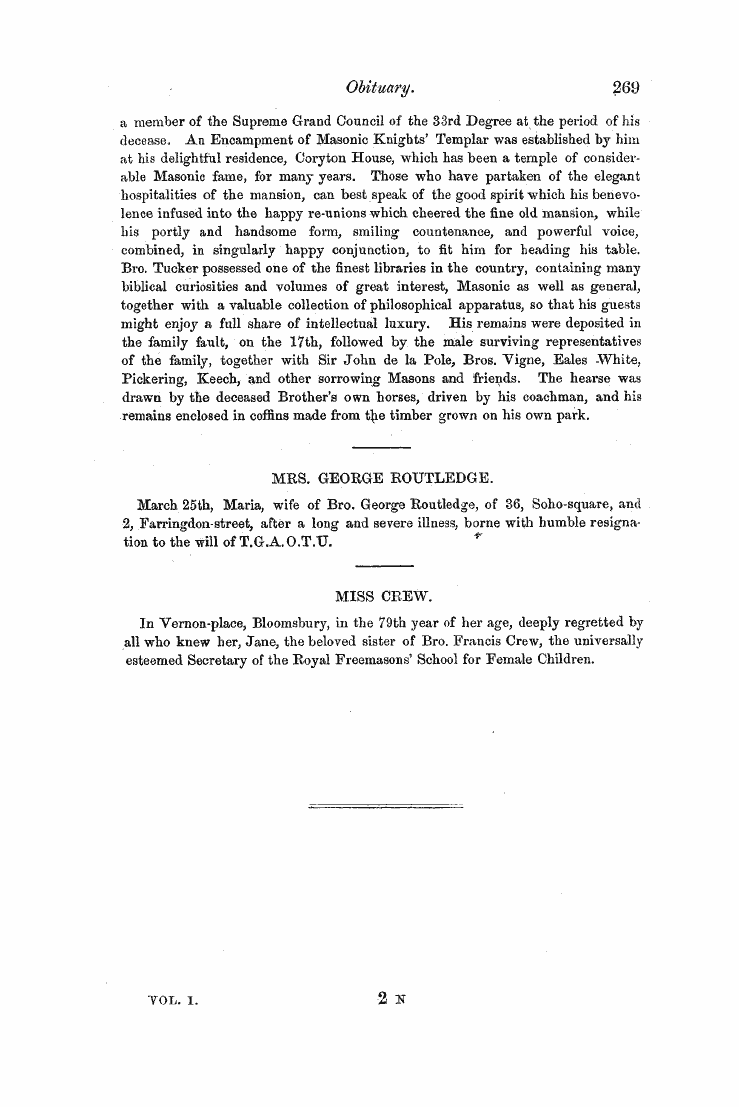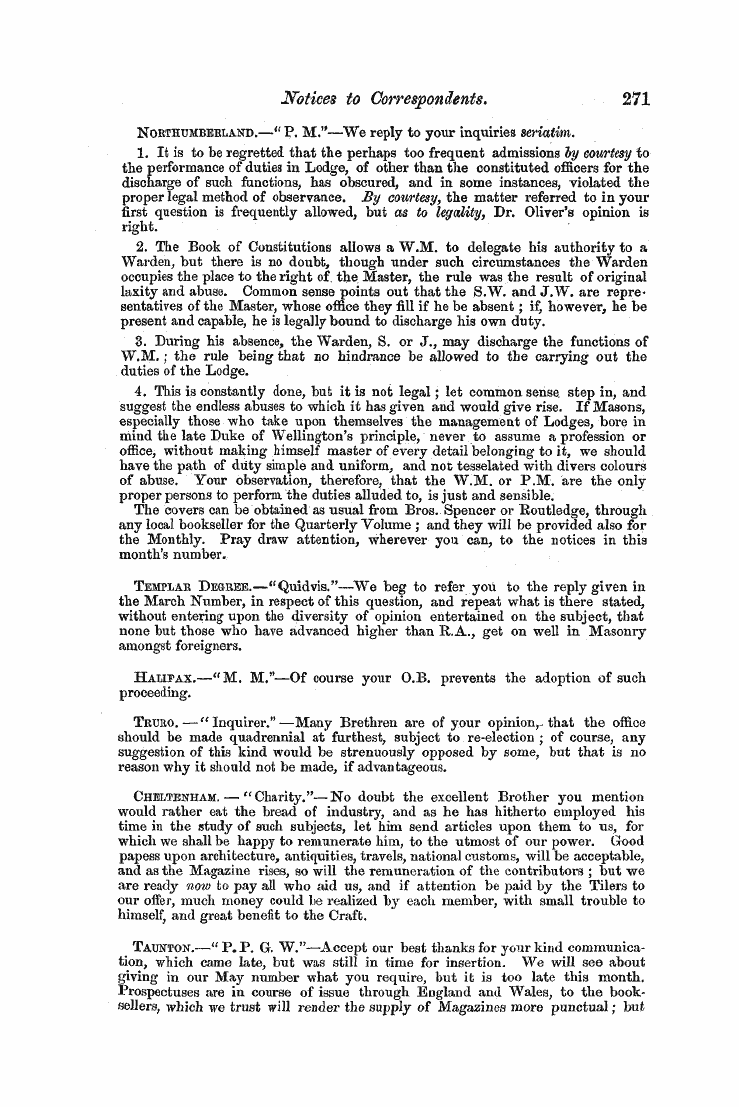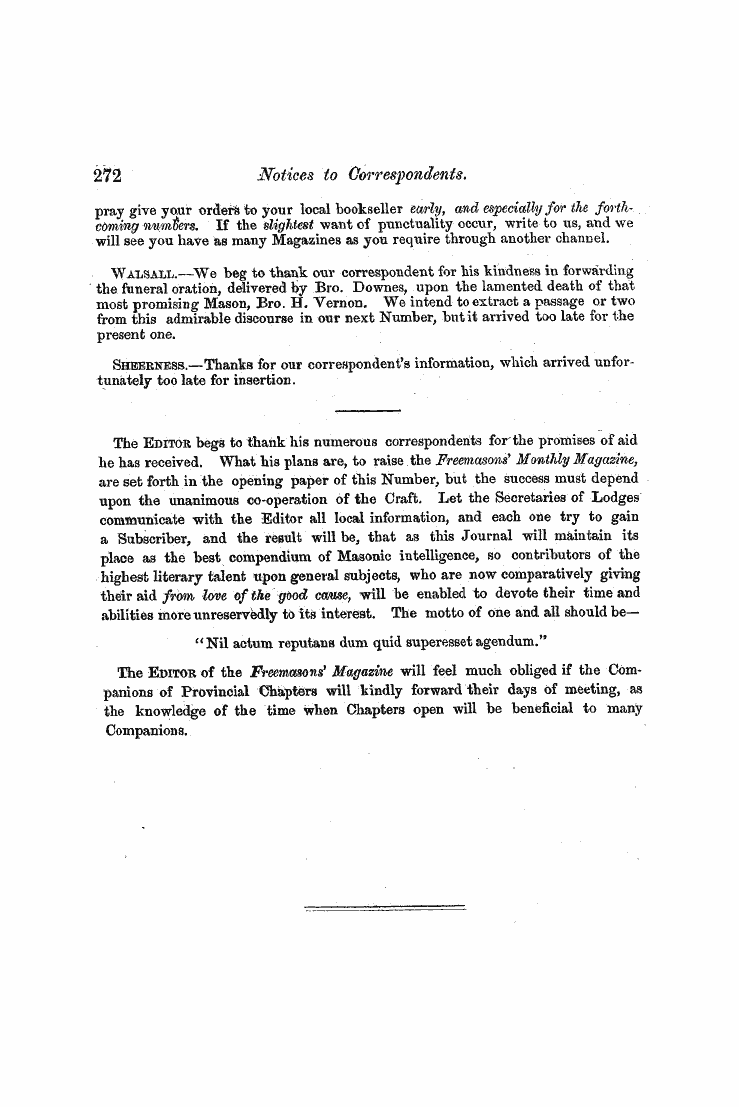-
Articles/Ads
Article Untitled Article ← Page 4 of 5 →
Note: This text has been automatically extracted via Optical Character Recognition (OCR) software.
Untitled Article
that there ^ are many injunctions on this subject in the ecclesiastical canons , where the civil laws did not interfere ; where the clergy had not sufficient power to obtain the proscription of an evil custom , they endeavoured to banish it by the censures of the Church .
It is only possible to arrive by deduction at an idea of the component parts of the agricultural or servile class in England , in the earlier period of the Saxon rule . The old chronicles tell us that the Angles and Saxons came in such numbers to settle in this island , that they left their original country entirely destitute of population ; they must , therefore , have brought with them a servile class of
settlers , ready to cultivate the lands that were to be shared amongst them . As the Saxons extended their conquests , the vanquished Romano-British population was added to the servile class . The change in their condition was much smaller than we are in the habit of supposing . There can be no doubt that the agricultural population under the Romans presented the same physiognomy ; it was only a
Roman colonus who changed his lord and became a Saxon theow . But the free inhabitants of the cities , and captives of every class , were ( perhaps with exceptions ) reduced to the same condition . We thus observe in what respect the rural population differed , as regards the proportions of its component parts . In the first Anglo-Saxon kingdoms , Kent , Essex , Wessex , & c , the foreign race of serfs , who came i ^ as invaders , must have formed the largest part ; perhaps , in some
districts , the whole mass of the agriculturists . In the later conquests , —Mercia , the extreme parts of the Northumbrian kingdom , and the Western parts of the island , —there must have been a large , and sometimes a preponderating mixture of the older British population . To the gradual melting together of these races we may attribute much of the difference which is still observed in the physical characteristics of the peasantry of different counties , and perhaps some of the variations of dialect .
We may conveniently arrange the Anglo-Saxon laws in two distinct divisions : one , from the sixth century to the earlier half of the eighth , includes the period during which the primitive customs of the different tribes of invaders remained more or less in force , and the different tribes independent of each other ; while the second belongs to that period following the union of the older Anglo-Saxon
kingdoms under one head . The most common name of the serf , under theAnglo-Saxons , was ^^^ , a bondman . He is sometimes named an ceht , as being part of his lord ' s property . A female serf is termed a wyln . The earliest name we meet with as given to this class is esne . The Kentish laws of Ethelbert , promulgated "in Augustine ' s days , " and of Hlothere and Eadric ( a . d . 674—726 ) have a few
articles relating to the esne , chiefly fixing the proportion of his hot , or fine , for personal injuries inflicted on others , in comparison with that of freemen . By one of the laws of Ethelbert , it is enacted that if a man corrupt a female serf or esne , whose husband is living , he shall make twofold hot , but we find ample proof that the unmarried esnes were unpiv tected by law from the outrages of the landlords .
Note: This text has been automatically extracted via Optical Character Recognition (OCR) software.
Untitled Article
that there ^ are many injunctions on this subject in the ecclesiastical canons , where the civil laws did not interfere ; where the clergy had not sufficient power to obtain the proscription of an evil custom , they endeavoured to banish it by the censures of the Church .
It is only possible to arrive by deduction at an idea of the component parts of the agricultural or servile class in England , in the earlier period of the Saxon rule . The old chronicles tell us that the Angles and Saxons came in such numbers to settle in this island , that they left their original country entirely destitute of population ; they must , therefore , have brought with them a servile class of
settlers , ready to cultivate the lands that were to be shared amongst them . As the Saxons extended their conquests , the vanquished Romano-British population was added to the servile class . The change in their condition was much smaller than we are in the habit of supposing . There can be no doubt that the agricultural population under the Romans presented the same physiognomy ; it was only a
Roman colonus who changed his lord and became a Saxon theow . But the free inhabitants of the cities , and captives of every class , were ( perhaps with exceptions ) reduced to the same condition . We thus observe in what respect the rural population differed , as regards the proportions of its component parts . In the first Anglo-Saxon kingdoms , Kent , Essex , Wessex , & c , the foreign race of serfs , who came i ^ as invaders , must have formed the largest part ; perhaps , in some
districts , the whole mass of the agriculturists . In the later conquests , —Mercia , the extreme parts of the Northumbrian kingdom , and the Western parts of the island , —there must have been a large , and sometimes a preponderating mixture of the older British population . To the gradual melting together of these races we may attribute much of the difference which is still observed in the physical characteristics of the peasantry of different counties , and perhaps some of the variations of dialect .
We may conveniently arrange the Anglo-Saxon laws in two distinct divisions : one , from the sixth century to the earlier half of the eighth , includes the period during which the primitive customs of the different tribes of invaders remained more or less in force , and the different tribes independent of each other ; while the second belongs to that period following the union of the older Anglo-Saxon
kingdoms under one head . The most common name of the serf , under theAnglo-Saxons , was ^^^ , a bondman . He is sometimes named an ceht , as being part of his lord ' s property . A female serf is termed a wyln . The earliest name we meet with as given to this class is esne . The Kentish laws of Ethelbert , promulgated "in Augustine ' s days , " and of Hlothere and Eadric ( a . d . 674—726 ) have a few
articles relating to the esne , chiefly fixing the proportion of his hot , or fine , for personal injuries inflicted on others , in comparison with that of freemen . By one of the laws of Ethelbert , it is enacted that if a man corrupt a female serf or esne , whose husband is living , he shall make twofold hot , but we find ample proof that the unmarried esnes were unpiv tected by law from the outrages of the landlords .










































